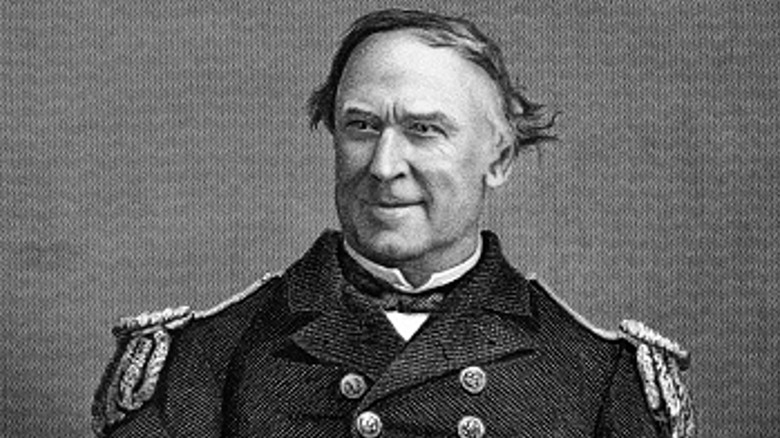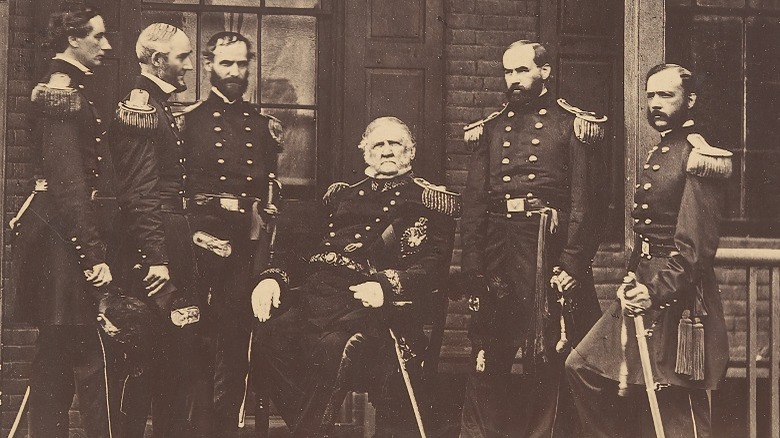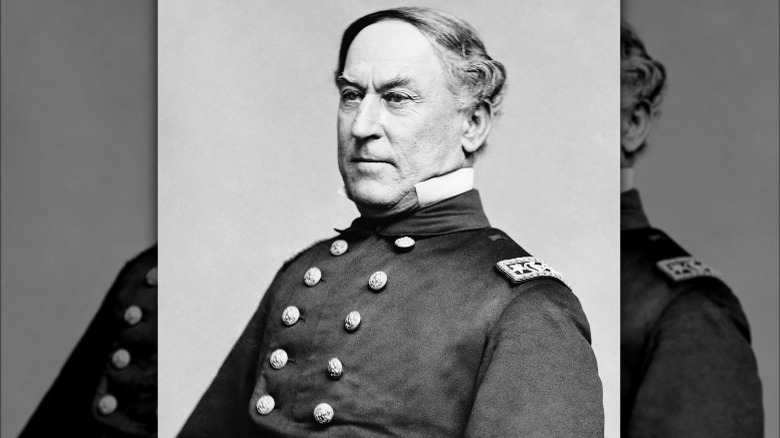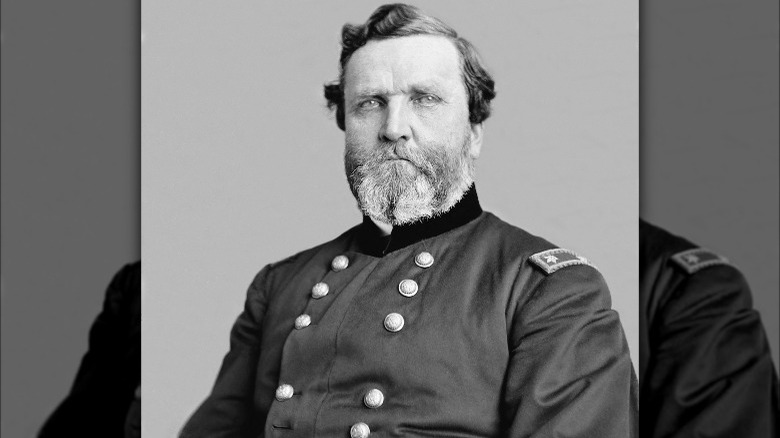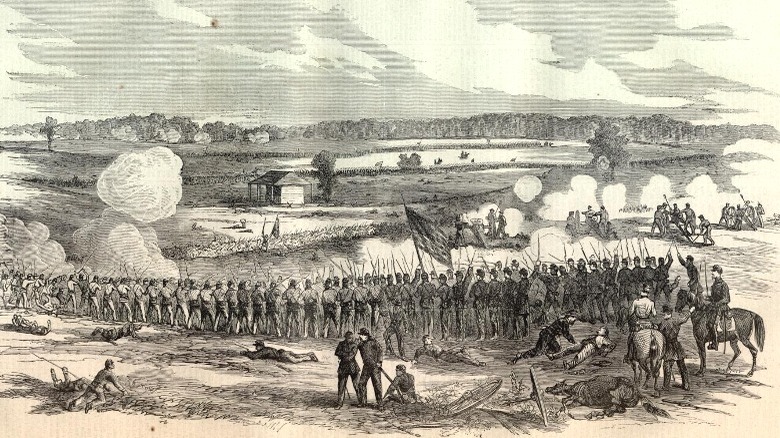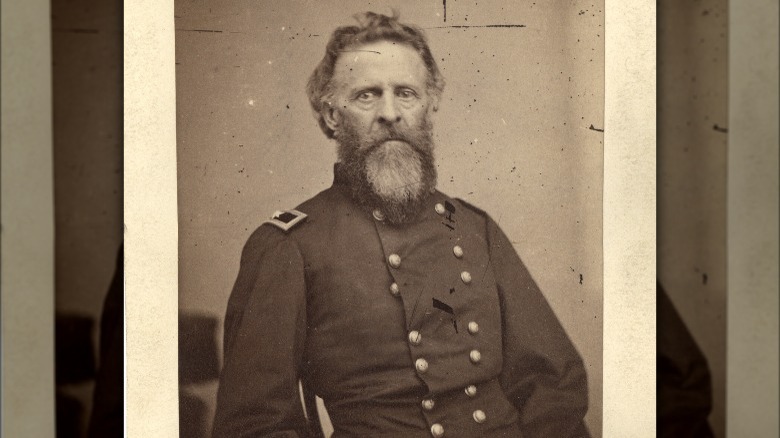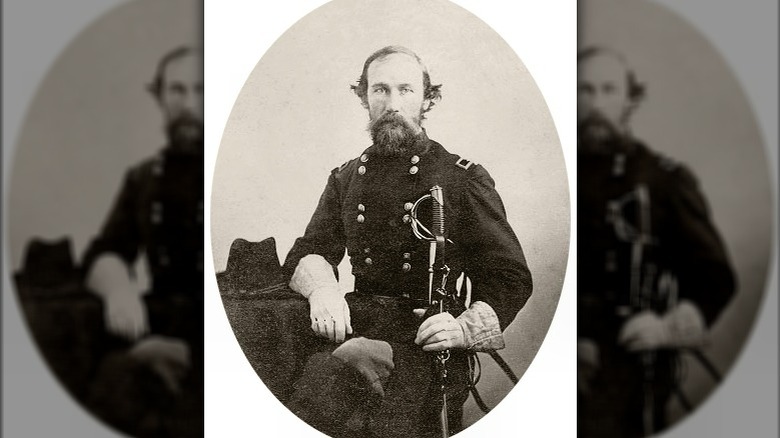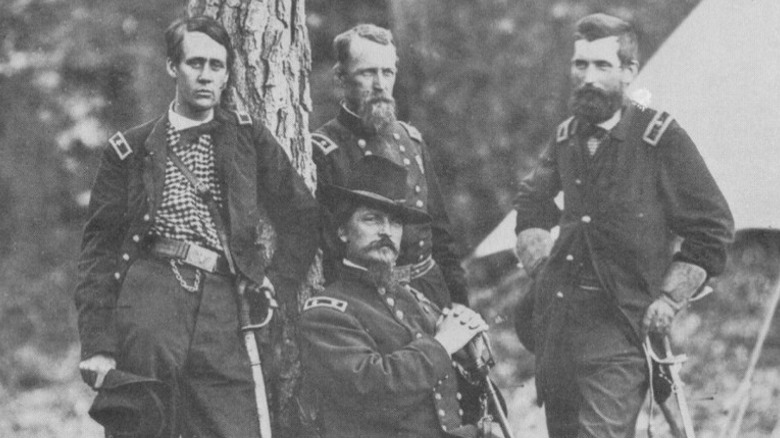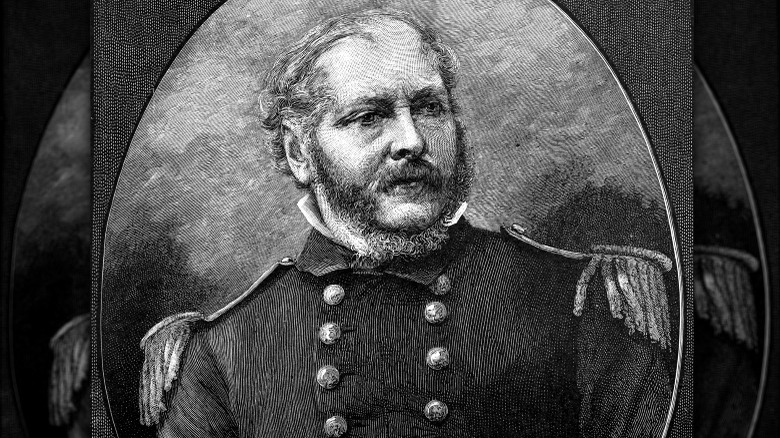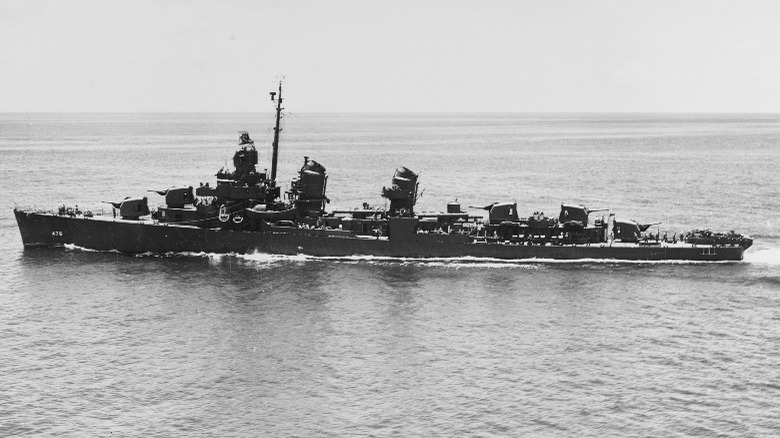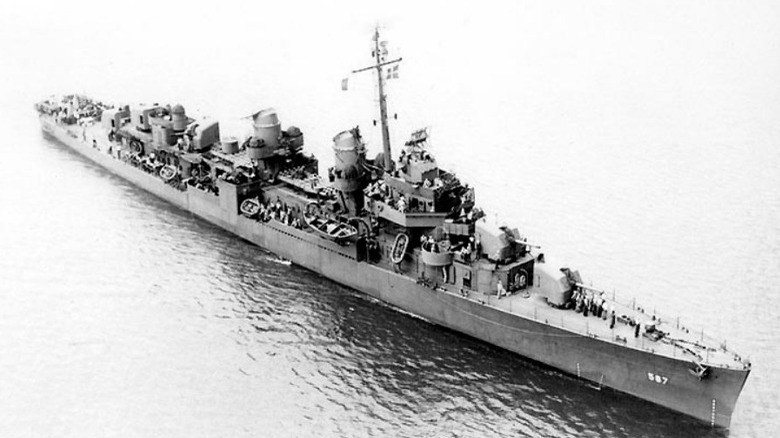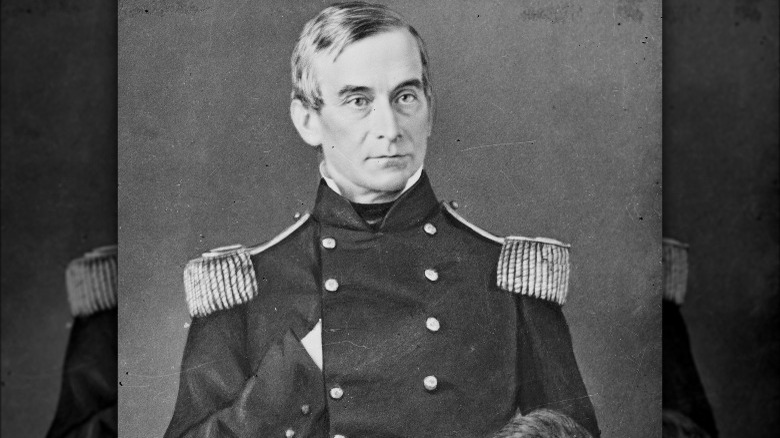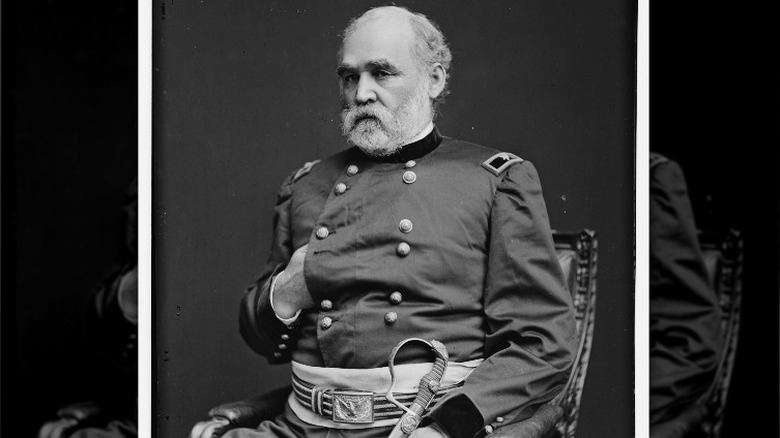Southern Generals And Admirals Who Chose To Fight For The Union
From 1861–1865, the American Civil War was one of the deadliest conflicts in the world. It is estimated that more than 2 million Americans fought in the war, with just over 620,000 perishing on the battlefield. The war infamously ripped apart families apart and saw brother fighting against brother on the bloody battlefield. The main cause of the war was slavery, and the Confederacy seceded from the Union in order to preserve their chattel way of life.
One of the toughest decisions an individual had to make, especially those from the South, was whether or not to stay loyal to the seceding states or to the larger Union. Many Southerners chose to stay loyal to their state rather than the Union, including probably the most famous Southern Civil War general of all: Robert E. Lee. Lee stayed devoted to his home state of Virginia, despite having been in the Union Army since the late-1820s. Lee turned down President Abraham Lincoln's offer to lead the Union Army, eventually becoming who many consider to be the finest general in Confederate history.
However, not all Southerners shared Lee's feelings about secession and the Union. Many of them felt their loyalties to the Union outweighed their loyalties to their birth states, and they remained committed to the Union and the destruction of slavery. From General Winfield Scott to Rear Admiral Fabius Stanly, these are the Southern generals and admirals who chose to fight for the Union.
Major General Winfield Scott
Known as "Old Fuss and Feathers," General Winfield Scott (pictured sitting) was one of the oldest generals in the Union Army when the Civil War broke out in 1861. Born in Petersburg, Virginia on June 13, 1786, the Union was barely a decade old when Scott entered the world. His first foray into military life came when he joined the cavalry of the Virginia Militia in his early-20s. He later joined the Union army and served in the War of 1812, and he was the top Union general during the Mexican-American War in the 1840s. After a failed bid for the U.S. presidency, he also served in the Pig War in the 1850s.
When the Civil War began in 1861, Scott was still the Commanding Major General in charge of Union forces. He chose to stay loyal to the Union rather than join his former unit the Virginia Militia. Unfortunately, in his 70s at this point, Scott's effectiveness as a commander and leader was not as strong as it was when he was younger. Still technically in charge of the Union forces, he was de facto succeeded by General George McClellan, and he retired before the end of 1861. He died on May 29, 1866, after the war ended.
Admiral David Farragut
Of all the Southern generals and admirals who fought for the Union in the Civil War, perhaps the most famous is Admiral David Farragut. Farragut was born in Tennessee the day after Independence Day in 1801, the son of a Spanish merchant who was also a veteran. While still a boy he moved to Virginia and began living with Captain David Porter, a man whose son would later serve alongside Farragut during the Civil War.
As incredible as it might sound, Farragut actually joined the navy when he was still a kid at the age of just 9 years old, also managing to serve in the War of 1812 as a pre-teen. In 1824, he received his first independent command, and the following year he became a lieutenant. When the Civil War broke out in 1861, Farragut was a captain, and he chose to stay loyal to the Union Navy he had been a member of for most of his life. His most famous war exploits came during the Battle of New Orleans, Louisiana, in 1862, and the capture of Vicksburg in 1863 with Ulysses S. Grant.
In 1862, Farragut also received his commission as a rear admiral, and in 1864 he became vice-admiral — the first in navy history. He followed that by becoming the first admiral in U.S. Navy history in 1866. Farragut died on August 14, 1870, and has since had five different Navy ships commissioned in his honor.
Major General George Henry Thomas
If anyone defined the conundrum that southerners who fought for the Union during the Civil War felt, it was "Old Slow Trot," Major General George Henry Thomas. A southern boy through and through, Thomas was born on July 31, 1816, on a plantation in Virginia. His family owned slaves and believed in the utility of slavery — a conviction that would later drive a wedge between them and their Union son. In 1840, Thomas joined the Union Army after graduating from West Point. He would serve with both Braxton Bragg and Robert E. Lee, both of whom would later lead Confederate forces as generals.
When the war broke out Thomas stayed loyal to the Union Army, and his family and friends back home in Virginia never forgave him. He became a Major General and earned distinction for serving at the Battle of Chickamauga, which saw him face off against his former comrade Bragg and gain the nickname "The Rock of Chickamauga." This also earned Thomas the command of the Army of the Cumberland, and he took part in the takeover of Atlanta after being passed over for head command in favor of William Tecumseh Sherman.
Thomas died on March 28, 1870, of a stroke. Though maligned during his lifetime in his home state, today a statue of him is located in his namesake Thomas Circle in downtown Washington, D.C., where he forever overlooks his native Virginia.
Brigadier General William Rufus Terrill
Brigadier General William Rufus Terrill was another perfect example of the affliction Southerners had to deal with by choosing to stay loyal to the Union. Born on April 21, 1834, in Covington, Virginia, Terrill's family was completely split apart by the war. While William decided to fight for the North, three of his brothers chose the other option and joined the Confederate Army.
His family was less than pleased with his decision to fight for the Union, with his own father writing to him that it made his "heart bleed" that his son was "playing the part of Benedict Arnold" — referring to the infamous traitor during the American Revolution (via the Berks History Center). He threatened to hang his son if he tried to return to Virginia and told him his name was "stricken from the family record." Terrill apparently turned down a commission in the Confederate Army to stay in the Union.
The Union Army immediately made Terrill a captain, and he fought with distinction at the Battle of Shiloh in April 1862. After also participating in the siege of Corinth a few weeks later, Terrill became a brigadier general in September. Terrill died on October 8, 1862, while commanding troops at the Battle of Perryville. His brother James Barber Terrill was also a general for the Confederacy and died in 1864 at the Battle of Bethesda Church.
Brevet Major General Philip St. George Cooke
Born on June 13, 1809, Brevet Major General Philip St. George Cooke was a native of Loudoun County, Virginia. He left Virginia when he was just 14 years old to attend West Point in New York, but returned to the South as a lieutenant in an infantry regiment in Missouri. Cooke took part in both the Black Hawk War in the 1830s, where he was promoted to first lieutenant in 1834, and in the Mexican-American War in the 1840s. He became a brevet lieutenant colonel in 1849, and a full lieutenant colonel in 1854.
When the Civil War broke out Cooke gave little thought to remaining loyal to Virginia. He immediately threw his lot in with the Union, and his family was split apart. His biological son became a brigadier general for the Confederacy, and two of his sons-in-law also fought for the South. One of his sons-in-law fought for the Union with him. Just months after the war broke out Cooke attained the rank of brigadier general, but he was removed from the field in 1863 after controversial tactics.
He was brevetted a major general in 1866, but his service following the war generated even more scrutiny due to several incidents. Still, he was the commander of several different armies until his retirement in 1873. Eventually, he was able to reconnect with his Confederate son before his death, which occurred on March 20, 1895, in Detroit.
Brigadier General Edmund Jackson Davis
Many Civil War generals and admirals took prominent positions in the government following the end of the war, and one of the most prominent was Brigadier General and later Governor, Edmund Jackson Davis. Davis was born on October 2, 1827, in St. Augustine, Florida, but he made his antebellum reputation in the state of Texas. There, he became a notable attorney and later the District Attorney of the 12th District at Brownsville.
When Texas seceded from the Union in early-1861 Davis did not support it, and he lost his judgeship — which he had held since 1856 — after not giving his oath to the Confederacy. After making his way north and speaking with none other than Abraham Lincoln, Davis became a colonel and began recruiting a Texas cavalry regiment. He was briefly captured in 1863 following his return to Texas, but he was released and continued to fight in the cavalry.
He was promoted to brigadier general in 1864, and after the war ended he became the Governor of Texas in 1869. Serving only one controversial term, Davis died in Austin on February 7, 1883.
Major General John Gibbon
In terms of Southerners fighting for the Union, Major General John Gibbon (above far right) is a bit of an interesting case. Originally from Philadelphia, Pennsylvania, Gibbon moved to North Carolina when he was just 10 years old. He spent the rest of his youth growing up as a Southerner, and his father owned slaves on their North Carolina plantation. In 1842 he started attending West Point in New York, and he would later return to teach there in 1854 after several years of service in Mexico, Florida, and Texas.
When the Civil War began in 1861, Gibbon remained loyal to the Union, unlike the rest of his family. He immediately became chief of artillery, while his brothers and cousin all remained loyal to the Confederacy and fought for the South. After becoming a brigadier general, he led troops at both the Second Battle of Manassas and the Battle of South Mountain, and also fought at the Battles of Antietam, Fredericksburg, and Gettysburg, being wounded twice.
He later was promoted to major general in 1865, and he was present when General Robert E. Lee surrendered to end the war. After staying in the army for another 26 years, Gibbon retired in 1891 and died five years later on February 6, 1896, in Baltimore, Maryland.
[Featured image by Coemgenus via Wikimedia Commons | Cropped and scaled | CC BY-SA 3.0]
Rear Admiral John Ancrum Winslow
Spending the first 13 years of his life growing up in the South, Rear Admiral John Ancrum Winslow was born on November 19, 1811, in Wilmington, North Carolina. His first experience going north was attending school in Massachusetts when he turned 14, but it changed him forever. For the rest of his life, Winslow would remain a Northerner at heart, disregarding his Southern ties and staunchly supporting the Union during the Civil War.
After first joining the Navy as a midshipman in 1827, Winslow served in the Mexican-American War until illness got the best of him, but he returned to fight for the Union in 1861. He was injured again that December, but remained in the Navy and became a captain the following July. He formally gained command of the U.S.S. Kearsarge in April 1863, and he sank the infamous C.S.S. Alabama in 1864, which was commanded by his former shipmate Captain Raphael Semmes.
After sinking the Alabama, Winslow was promoted to commodore and later gained the rank of rear admiral in 1870. Winslow died on September 29, 1873, in his adopted home of Boston.
Rear Admiral Fabius Maximus Stanly
Boasting one of the best names of any Civil War admiral on either side of the fighting, Rear Admiral Fabius Maximus Stanly was born on December 15, 1815, in New Bern, North Carolina. He joined the Navy just days after turning 16, and became a lieutenant 10 years later in 1841. Though he fought well during the Mexican-American War, he ran into trouble following a disagreement with Commander Zachariah F. Johnston, his superior officer.
Found guilty in a general court-martial and suspended, Stanly was saved when President Millard Fillmore stopped him from being kicked out of the Navy completely. He became a commander in 1861 when the war broke out, staying loyal to the North and playing a vital role in the capture of Charleston, South Carolina, in 1865. He was not commissioned as a captain until 1866 after the war had ended.
He later became a commodore in 1870 and finally a rear admiral in 1874. However, just a few months later Stanly retired, and on December 5, 1882, he died just days short of his 67th birthday. In 1942, the U.S. Navy commissioned the U.S.S. Stanly (pictured above) in his honor.
Rear Admiral Henry Haywood Bell
Another southern admiral who decided his loyalties remained with the north was Rear Admiral Henry Haywood Bell. Bell was born on April 13, 1808, in North Carolina in either Franklin or Orange County. He joined the Navy at 15 as a midshipman, eventually rising to the rank of commander prior to the war breaking out. Much of his antebellum naval career involved serving internationally on the coasts of China and Cuba.
When the war began Bell's allegiance was ripped in practically every direction. His family was in North Carolina and committed to the Confederacy, as was his wife's family in Virginia. However, even though his friends tried to recruit him, Bell firmly remained a Union man. Serving under Admiral David Farragut, another southerner who stayed loyal to the Union, Bell helped him capture New Orleans, Louisiana, and he also participated in the siege of Vicksburg the next year in 1863.
It was after the war in 1866 that Bell achieved the rank of rear admiral, but he died the next year on January 11, 1868, while stationed off the coast of Japan. He was just 59 years old when he died, and he is buried in Japan. In 1918 and 1943, the U.S. Navy dedicated two destroyers in his honor, both named the U.S.S. Bell (pictured above).
Brevet Major General Robert Anderson
The first Union general to gain widespread fame and attention, Brevet Major General Robert Anderson was actually a Southerner born in Kentucky on June 14, 1805. He joined the army at the age of 20, serving in both the Black Hawk and Mexican-American wars. At one point he even commanded future President Abraham Lincoln, whose election would later become the catalyst for the outbreak of the Civil War.
After Lincoln was elected, Anderson took over as the commander of Fort Sumter in South Carolina. Though the Confederates would take Sumter without much of a fight, Anderson's attitude under fire and courageousness made him a hero to millions of loyal Unionists. Following his surrender he was made a brigadier general, and Anderson served in the Army of Kentucky for two more years, but illness forced him to retire in 1863.
Still, on the four-year anniversary of the fall of Sumter, Anderson was at the fort once again, this time raising the Stars and Stripes instead of taking them down. In February 1865, Anderson was brevetted to major general, and he died on October 26, 1871, while in Nice, France.
Quartermaster General Montgomery C. Meigs
Brevet Major General Montgomery C. Meigs was born on May 3, 1816, in Augusta, Georgia. In addition to his military service, Meigs is also widely known for his architectural contributions to Washington D.C.. Meigs graduated from the University of Pennsylvania in 1831 and immediately entered the U.S. Military Academy. Upon graduating in 1836 he became commissioned as a second lieutenant. However, the majority of his antebellum career would take place in the U.S. Corps of Engineers, where helped construct the Capitol Dome and extension.
During his time in the Engineer Corps, Meigs worked with both future Confederate top General Robert E. Lee and future Confederate President Jefferson Davis. When the Civil War broke out Meigs became the quartermaster general in the Army. This meant he was responsible for logistics to make sure items like clothing, equipment, and other goods were able to make their way from depots to the soldiers in the field.
Without his work, the Union troops would not have been able to maintain their levels of supply during the war, and he was instrumental in both Ulysses S. Grant and William Tecumseh Sherman's armies. Following the war, Meigs designed both the Arlington National Cemetery in Arlington, Virginia, and the Pension Building in Washington, D.C. Meigs died on January 2, 1892, and is buried at the cemetery he helped design in Arlington.
